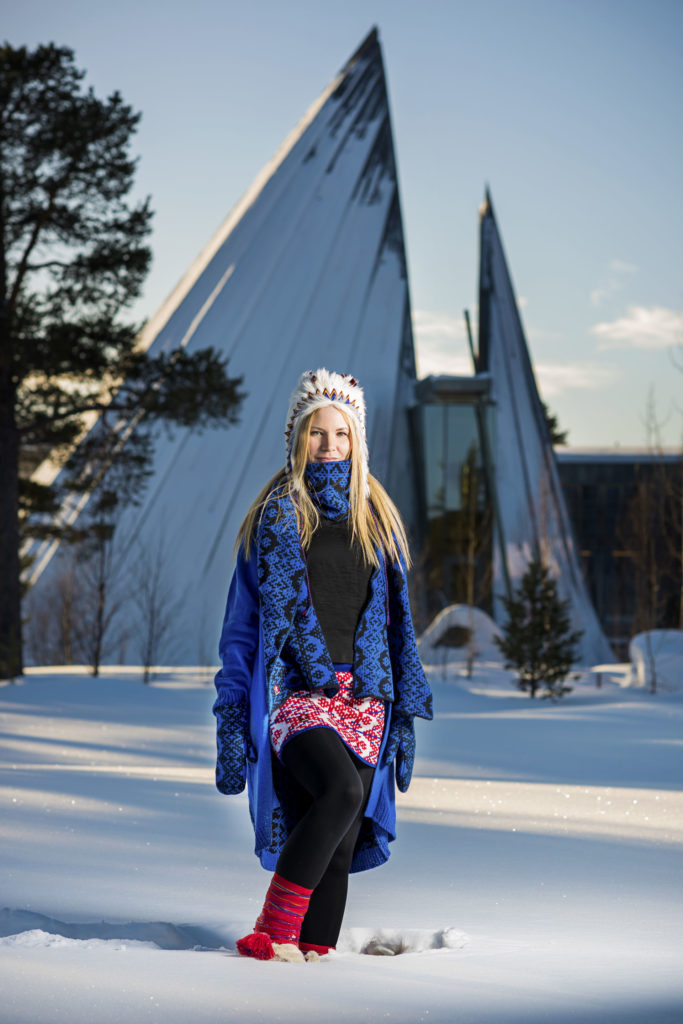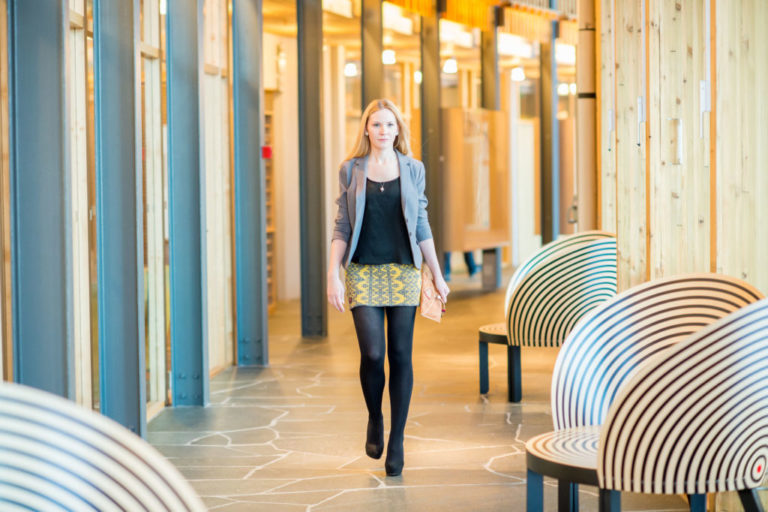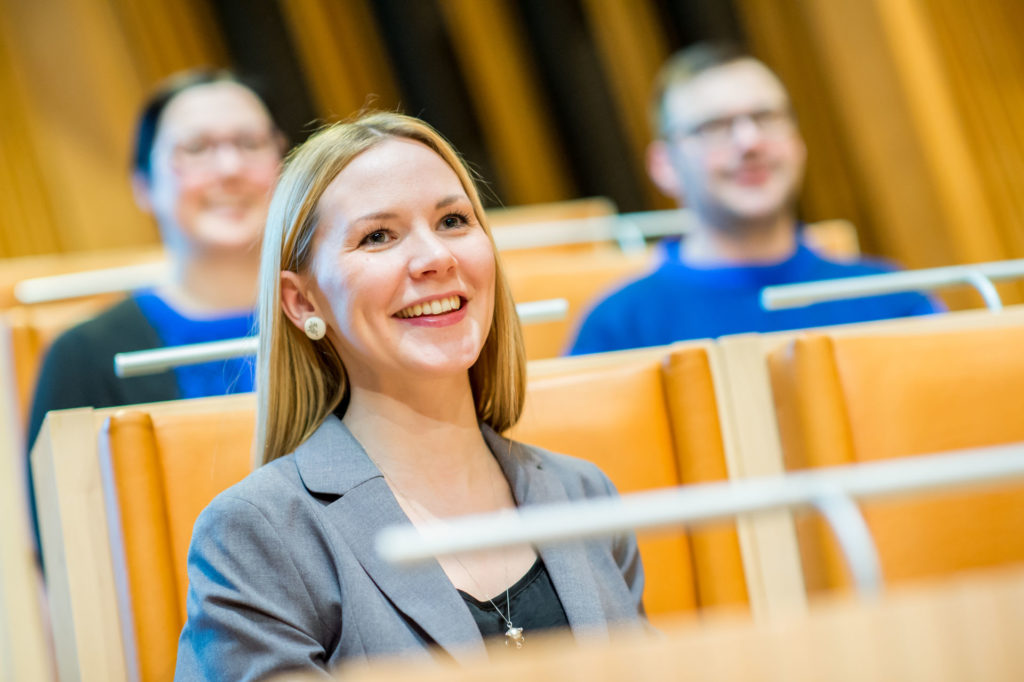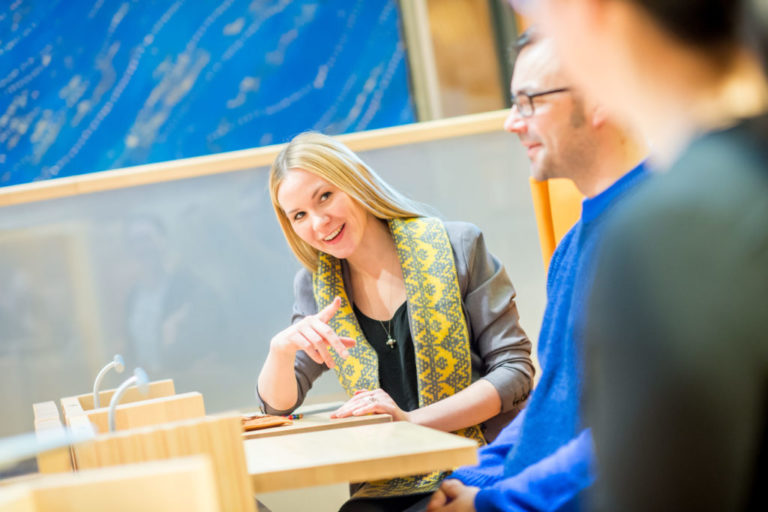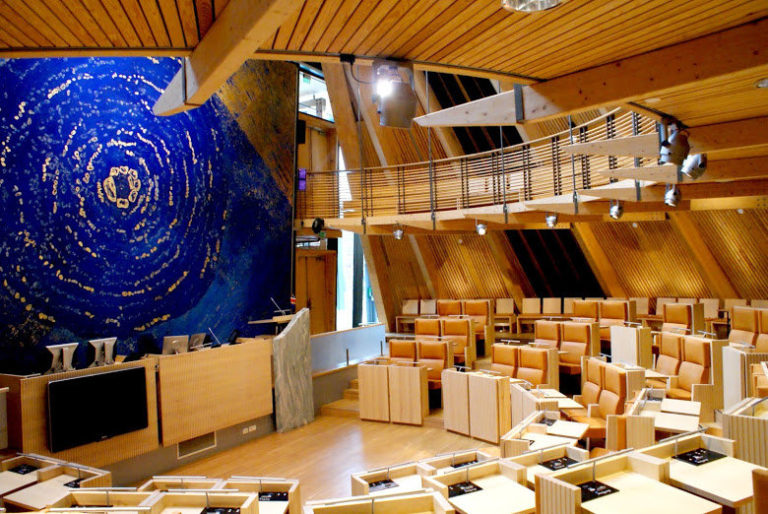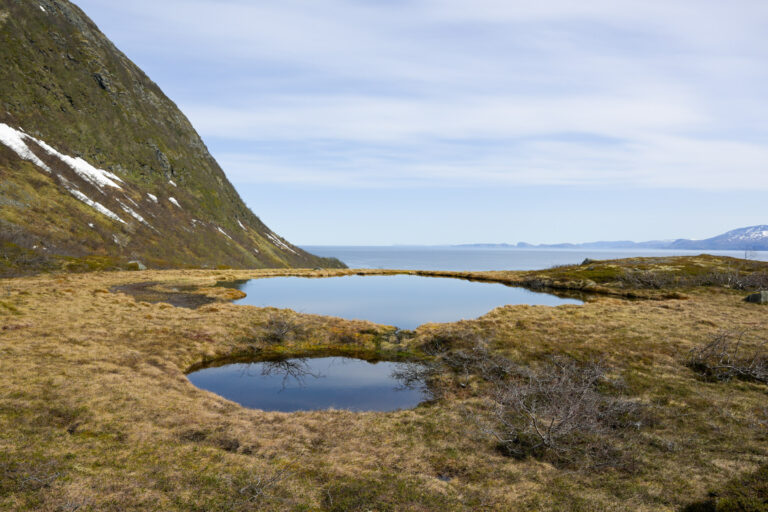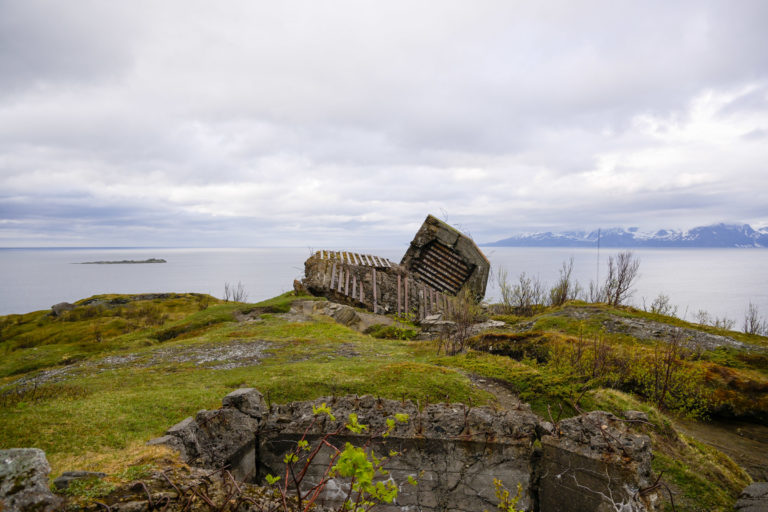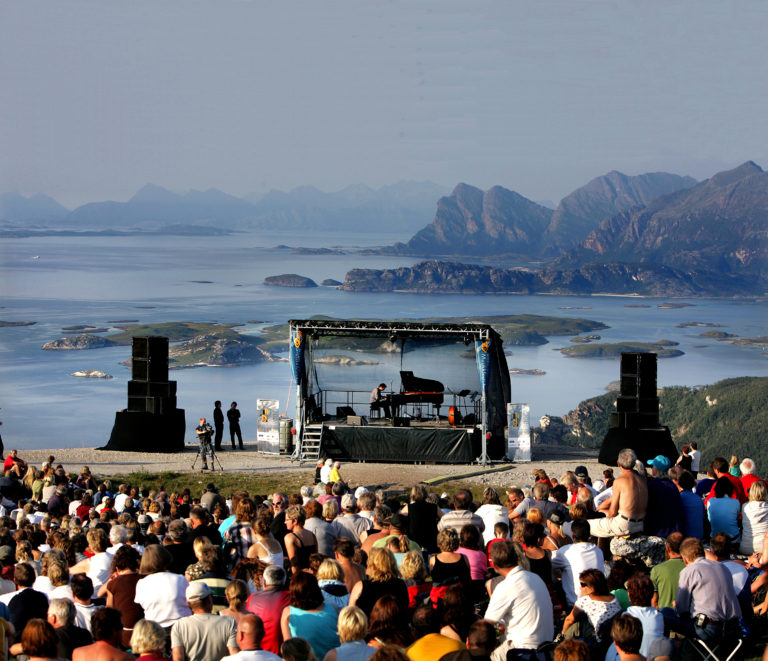The Sami Parliament does not seem out of place in the pine forests of Karasjok. The external walls are clad in broad strips of Siberian larch, and now that the building is a few years old, it has started to turn grey. In a few cold Karasjok winters, it will have turned a silvery colour. The most striking section of the building is the plenary assembly hall, which looks out over the tree tops. Otherwise, the Sami Parliament blends in perfectly with nature, and its impressive features need to be studied close up.
“Vandrehallen” greets you as you enter
You enter into the impressive Vandrehallen, which serves as both a foyer and a library. The simple lights suspended from the ceiling were inspired by the night sky, while the railings on the balustrade, which form an arc, were inspired by the Northern Lights. Large windows open out towards the surrounding forest.
The Library contains books in all Sami Languages
With its 30,000 volumes, the library houses Norway’s largest collection of books and documents concerning the Sami languages and Sami subjects. The library contains books in North Sami and in the eight other Sami languages. It also includes extensive specialist literature on Sami topics in the Scandinavian languages, English, Latin, German and various other languages. Children’s books in East Sami and Vulle Vuojaš, Donald Duck, in North Sami are the most readily available, while extensive works in Latin dating from the 1600s are only available upon request. The library is open to everyone.
The Sami Parliament is a functional and historical monument
Inside the library hangs a hide with King Olav’s signature from the opening of the first Sami Parliament in 1989, showing that Norway was behind the establishment of the Sami Parliament. The building itself was opened by King Harald in 2000 and was designed by Stein Halvorsen and Christian Sundby.
Corridor policy
A tour through the corridors on Alta slate reveals a wealth of hidden treasures. A series of portraits from 1917 were painted by the artist Astrid Aasen. She painted the participants at the first Nordic Sami meeting in Trondheim in 1917. This day is now celebrated as Sami National Day in four countries. Work by both photographer Kåre Kivijärvi and artist Synnøve Persen is displayed in the library. The phrases in hammered metal on wooden walls are Sami sayings and adages.
Plenary hall
As you enter the plenary assembly hall, at the very heart of the Sami Parliament, your attention is drawn to the huge blue picture by Hilde Schanke Pedersen. It is a concrete slab with abstract motifs, but the blue background colour and gold details evoke thoughts of the light and the landscape of the Sami region. The hall is semi-circular in shape and has a peaked structure, and from high windows the light floods down onto a simple interior in untreated wood. The lavvu shape of the plenary assembly hall was apparently inspired by the way in which the people of the north place wood out to dry in piles after felling and trimming it.
There are 39 representatives
The Sami region is divided into seven constituencies, one of which is Southern Norway south of the Sami region. A total of 39 representatives are elected from these constituencies. These representatives represent both their own Sami parties and national political parties. A total of 14,000 people in Norway are registered in the Sami electoral register. To be eligible for inclusion, you must have at least one great grandparent who speaks or spoke Sami and you must “feel” Sami. As a result of the official line of Norwegianisation that Norway pursued for much of the 20th century, many people of Sami extraction did not wish to register, but the number is steadily rising.
